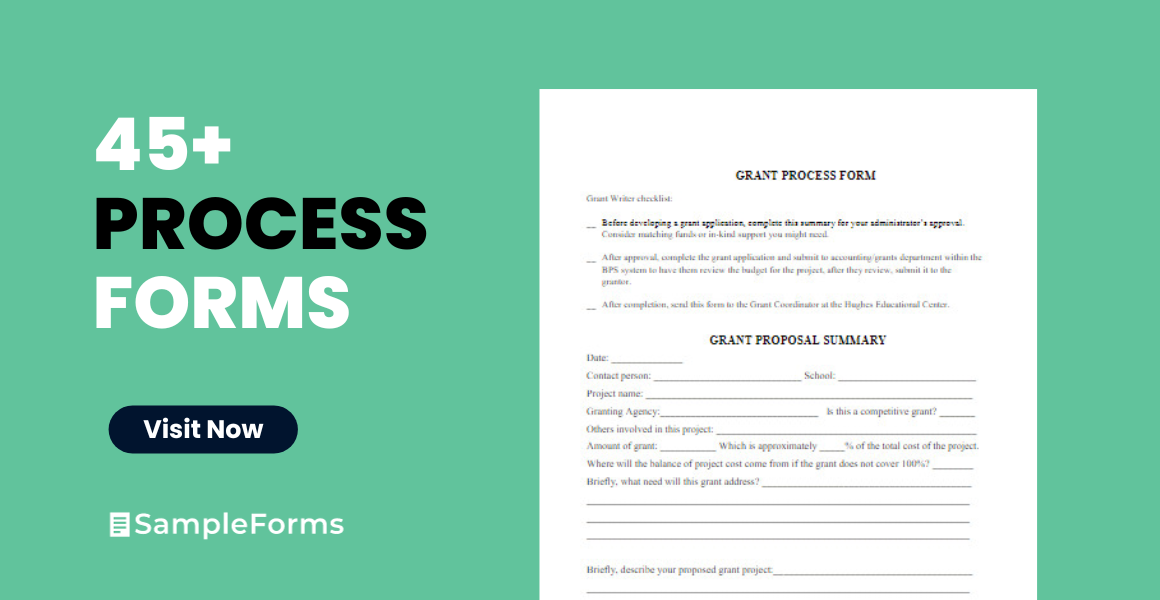Navigating through the multifaceted realms of business operations, a Process Form emerges as a crucial tool, orchestrating a symphony of systematic workflows and meticulous documentation. It serves as a beacon, illuminating the path from a task’s inception to its completion, while ensuring accuracy, consistency, and adherence to predefined protocols. By delving into its myriad forms, examples, and creation methodologies, we embark on a journey to explore the intrinsic weave of how Process Forms become the silent architects in constructing organized, efficient, and traceable business processes.
What is a Process Form? – Definition
A Process Form is a structured document or tool used within organizations to systematically capture and communicate specific information, ensuring that particular processes are executed consistently and effectively. These printable form typically outlines the necessary steps, tasks, and data required to perform a certain business process, providing a standardized framework that aids in minimizing errors, enhancing efficiency, and ensuring compliance with established protocols and regulations. Process Forms can exist in various formats, such as physical paperwork or digital templates, and are integral in various contexts, such as project management, order processing, and employee onboarding, to ensure the uniformity and traceability of actions and decisions.
What is the Meaning of the Process Form?
The meaning of a Process Form pertains to its role as a structured tool that provides a systematic approach for capturing and managing specific information related to a particular business or operational process. Essentially, it guides individuals through a set process, ensuring that it is executed in a consistent, effective, and compliant manner. The form typically specifies the necessary steps, tasks, and data required to navigate through a process, thereby acting as a blueprint for consistent execution and documentation. Process Forms are designed to minimize errors, enhance efficiency, and uphold compliance with established policies, thus ensuring that operations unfold in a smooth, standardized, and traceable manner across various domains of an organization.
What is the Best Sample Process Form?
An exemplary Sample Process Form would differ depending on the business context and specific use-case scenario. However, let’s create an imaginary yet representative sample of a Purchase Order Process Form. These fillable form would be used to manage and document the process of purchasing goods or services from external vendors.
Sample Purchase Order Process Form
1. Vendor Details:
- Vendor Name: [ABC Supplies Ltd.]
- Contact Person: [John Doe]
- Phone Number: [123-456-7890]
- Email Address: [john@abc-supplies.com]
2. Purchaser Details:
- Requester Name: [Jane Smith]
- Department: [IT Department]
- Approval Manager: [Emily Roe]
- Requested Date: [MM/DD/YYYY]
3. Order Details:
- Item Name: [XYZ Software License]
- Description: [One-year subscription for XYZ software]
- Quantity: [5]
- Unit Price: [$1,000]
- Total Price: [$5,000]
4. Delivery Details:
- Delivery Address: [123 Corporate Blvd, Suite 400, City, State, Zip Code]
- Desired Delivery Date: [MM/DD/YYYY]
- Special Instructions: [Ensure software licenses are sent via email to itlicenses@company.com]
5. Approval Section:
- Approval Status: [Approved/Not Approved/Pending]
- Approver’s Name: [Emily Roe]
- Approval Date: [MM/DD/YYYY]
- Comments: [All items are within budget. Approval granted.]
6. Confirmation of Receipt (To be filled upon receipt of goods/services):
- Received By: [__________]
- Date of Receipt: [MM/DD/YYYY]
- Items Checked and Verified: [Yes/No]
- Comments/Issues: [__________]
Key Features and Explanation:
- Vendor and Purchaser Details: Includes comprehensive information about the vendor and the individual/department making the purchase.
- Order Details: Specifies what is being purchased, providing a clear description, quantity, and pricing.
- Delivery Details: Details regarding where, when, and how the delivery should occur.
- Approval Section: Documents the approval (or lack thereof) of the purchase, along with any pertinent comments.
- Confirmation of Receipt: A section to confirm the receipt and accuracy of the delivered goods/services, to be filled out upon arrival.
How to Use:
- Filling the Form: The requester fills out sections 1-4, providing thorough details regarding vendor, purchase, and delivery.
- Approval: The form is forwarded to the approving manager, who reviews and completes the approval section, ensuring budget and requirement compliance.
- Order Placement: If approved, the order is placed with the vendor, using the details specified in the form.
- Receiving and Checking: Once the goods/services are received, the “Confirmation of Receipt” section is completed, confirming the accuracy and quality of the received items.
- Documentation: The completed form is stored as a record of the transaction, providing traceability and serving as a reference for future orders or audits.
This form not only documents every step of the purchase process but also ensures clarity, traceability, and compliance with procurement policies, making it a robust sample of a Process Form in a purchasing context. Different processes will require modifications and custom fields, adapting the form to meet their unique needs and contexts. You should also take a look at our Admission forms.
FREE 45+ Process Forms
1. Civil Process Form
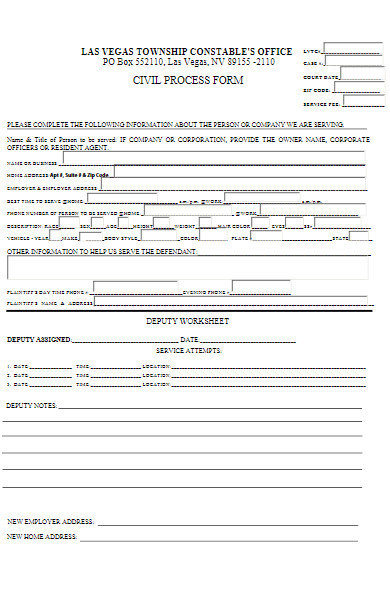
2. Scheduled Process Form
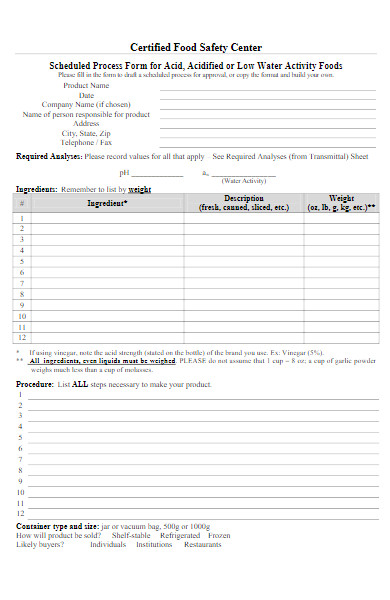
3. Plan Review Process Request Form
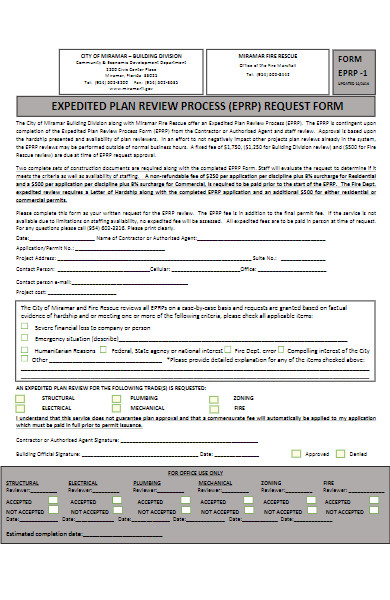
4. Student Due Process Form
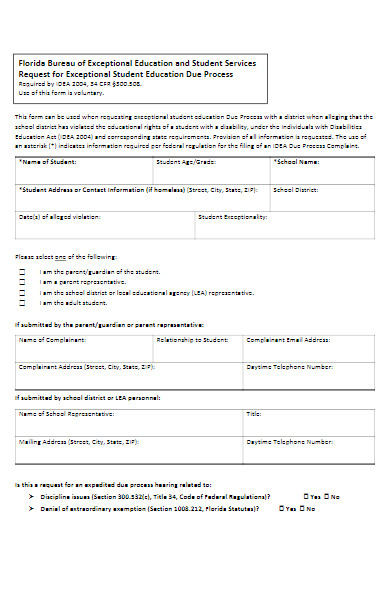
5. Data Collection Process Form
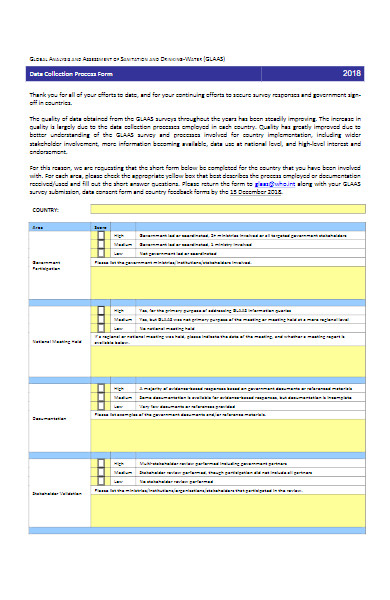
6. Criminal Process Request Form
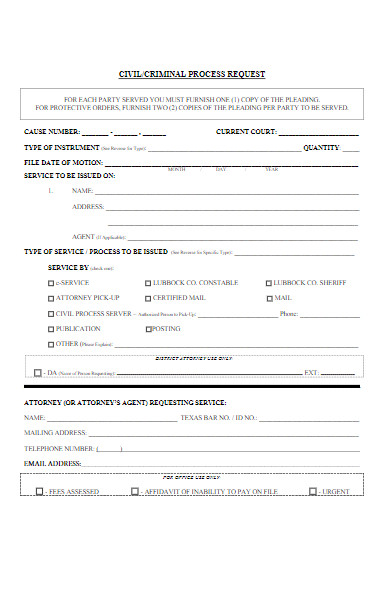
7. Process Documentation Form
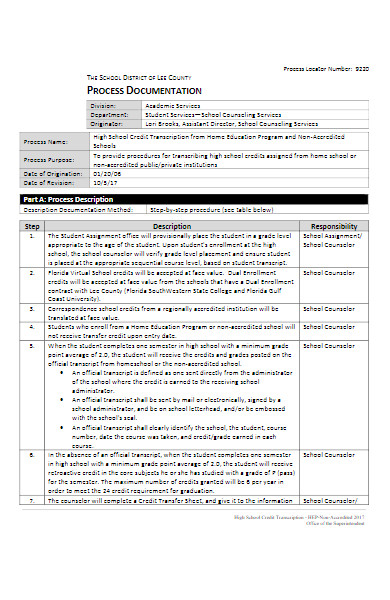
8. Request for Due Process Hearing Form
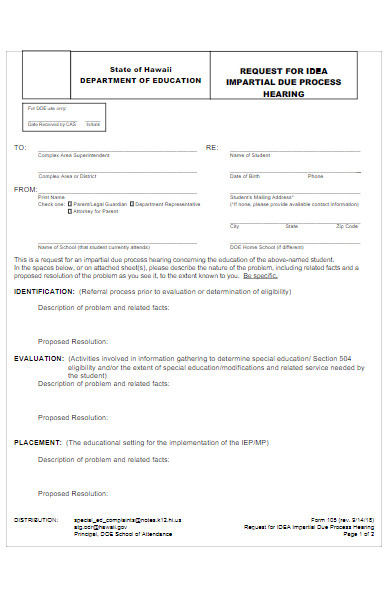
9. Return Process Form
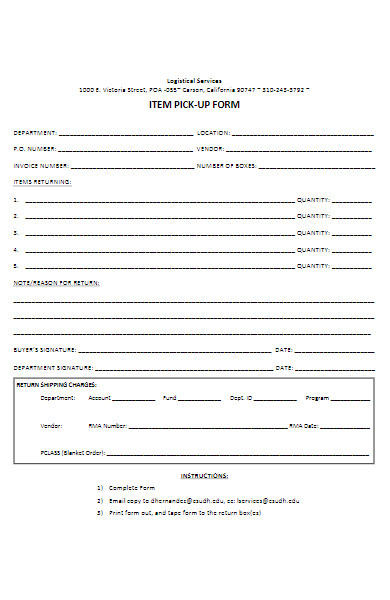
10. Civil Process Request Form
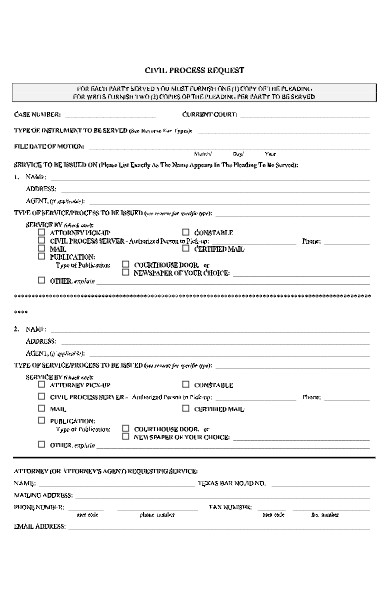
11. Return Process Form
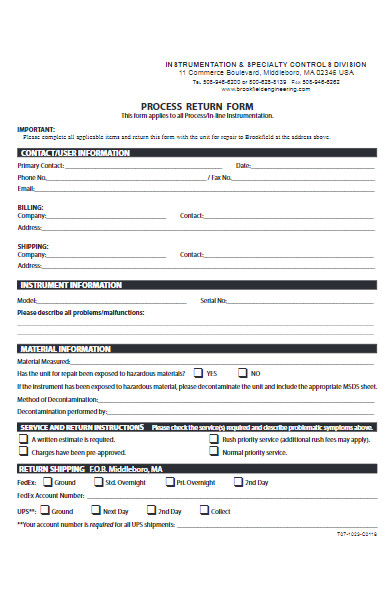
12. Service of Process Request Form
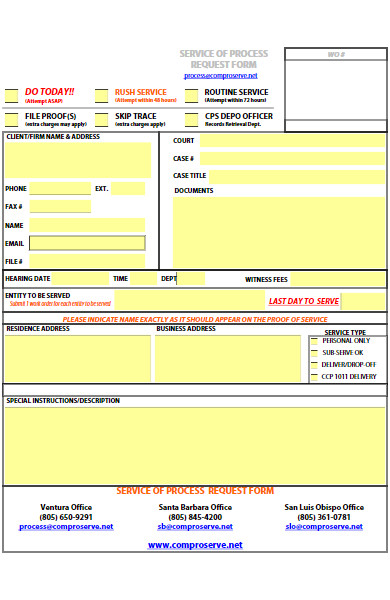
13. Due Process Hearing Form

14. Consultant Inspection Process Form
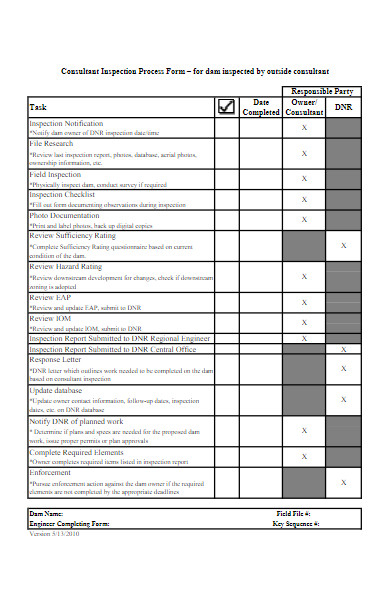
15. Civil Process Service Request Form
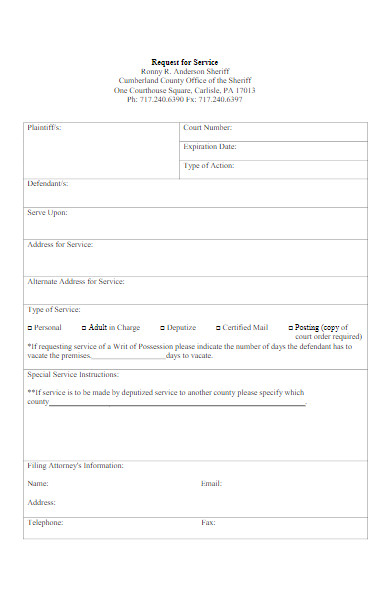
16. Petition Process Form
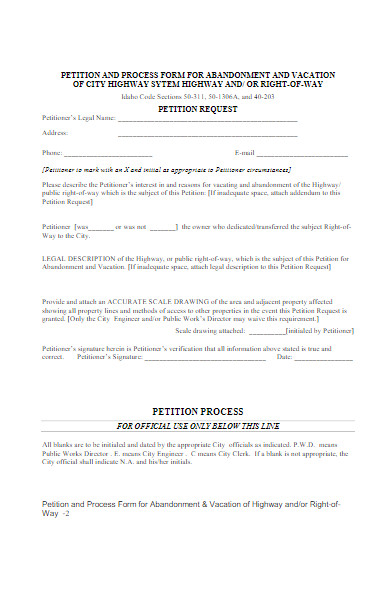
17. Review Period Process Form
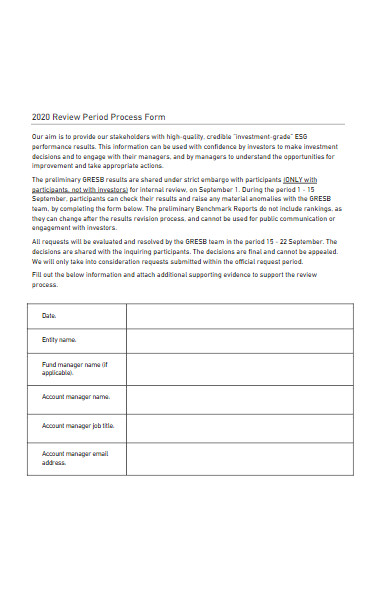
18. Academic Grievance Process Form

19. Security Process Form
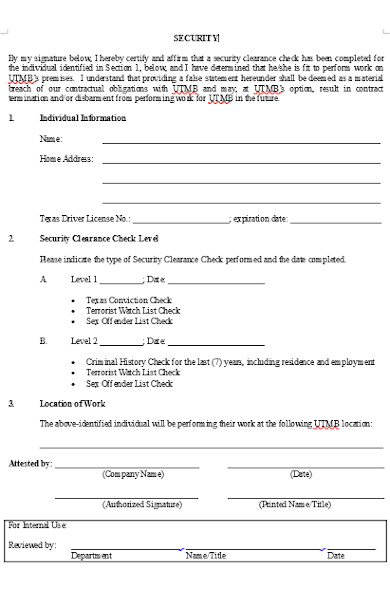
20. Vendor Registration Process Form
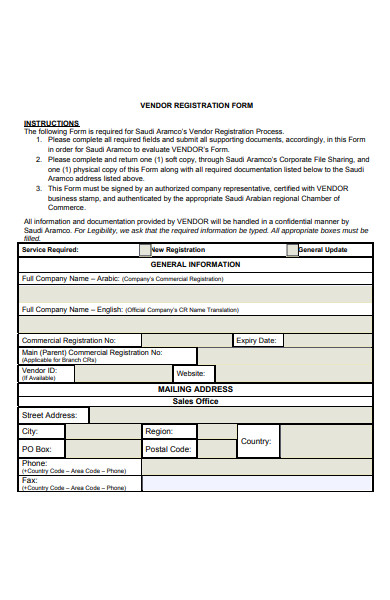
21. Teacher Evaluation Process Form
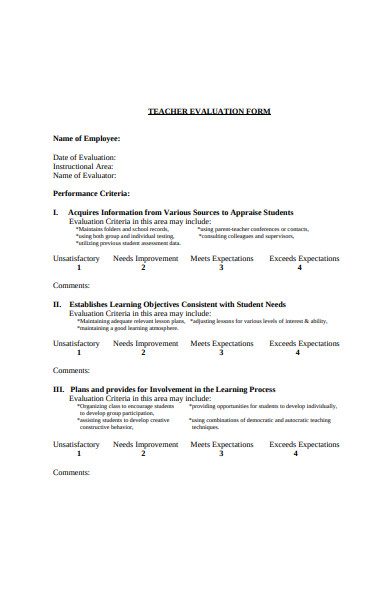
22. Work Order Process Form
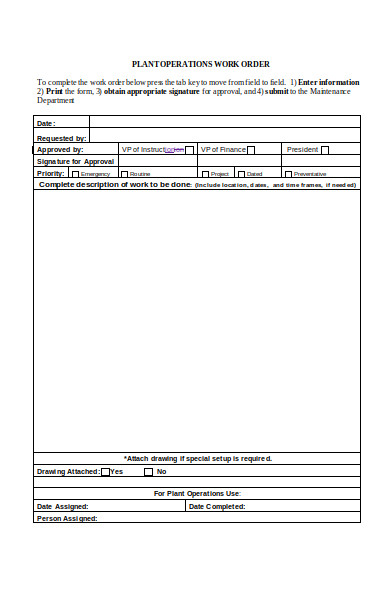
23. Service Animal Registration Process Form
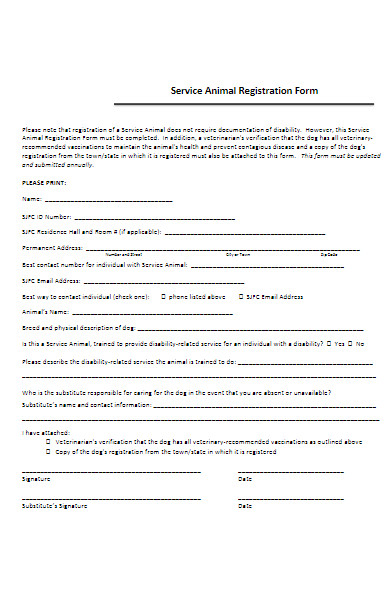
24. Formal Family Care Process Form
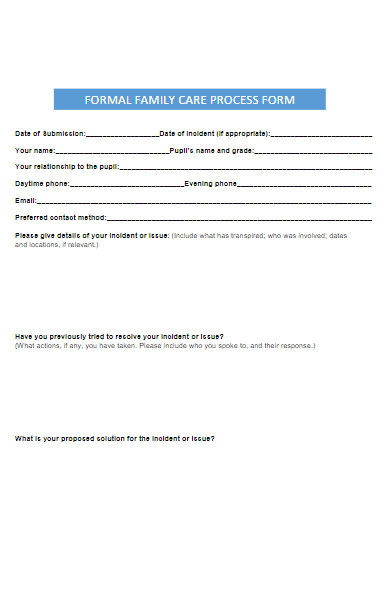
25. Uniform Consent to Service of Process Form
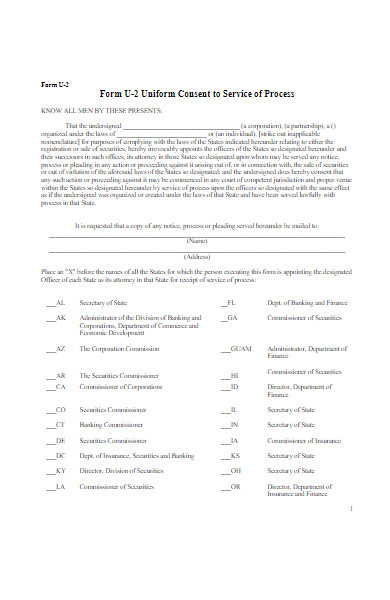
26. Appeal Process Form
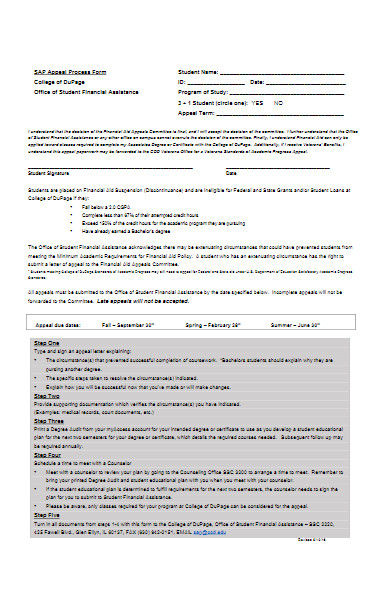
27. Grievance Process Form
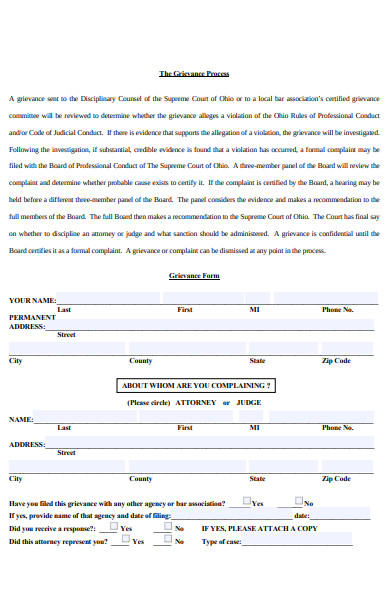
28. Processing Notary Public Form
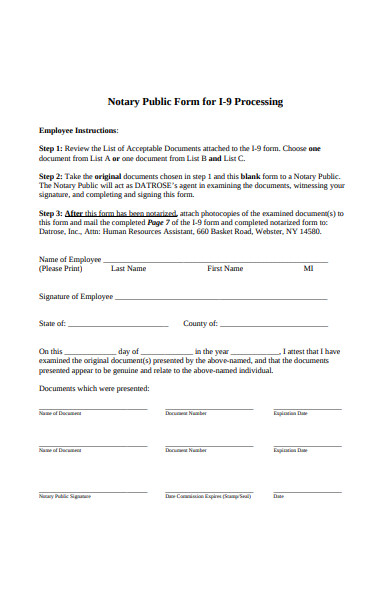
29. Request for Exception Process and Form
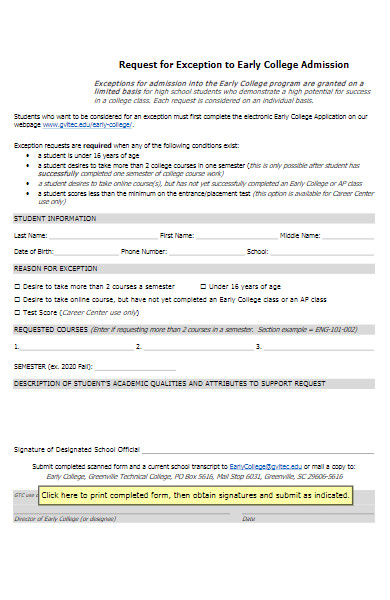
30. Work Process Reporting Form
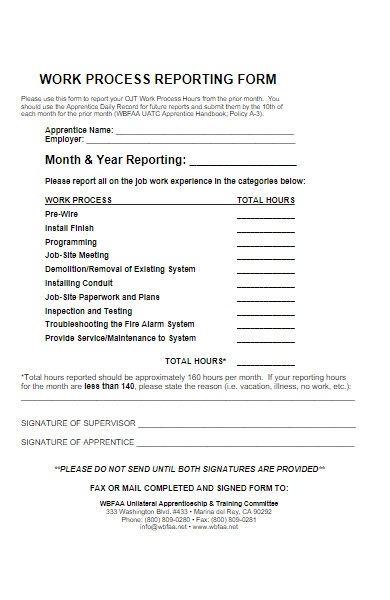
31. Supplier Process Sign Off Form

32. Business Process Form Example

33. Grant Process Form
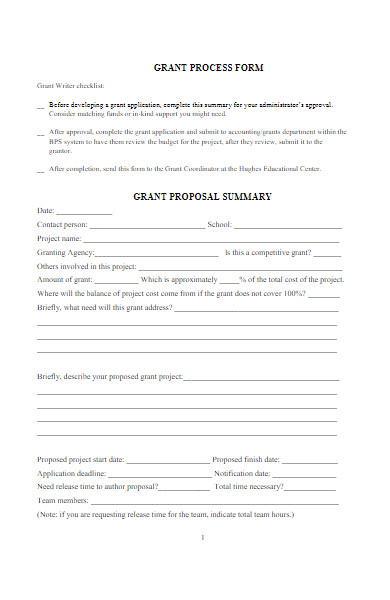
34. Citizen Complaint Process Form

35. Initiate Hiring Process Request Form
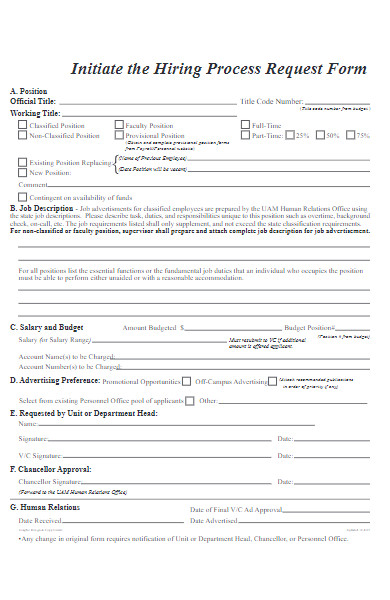
36. Process Change Request Form

37. Work Team Processing Application Form
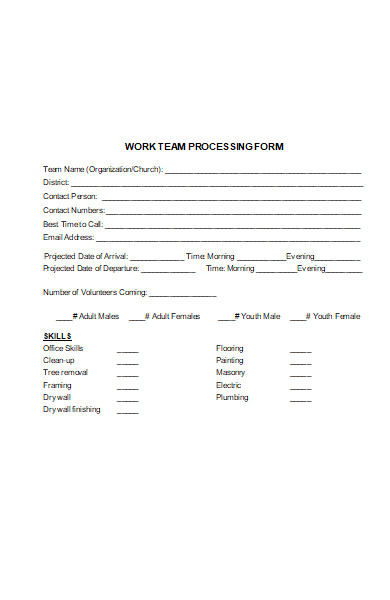
38. Employment Verification Process Form
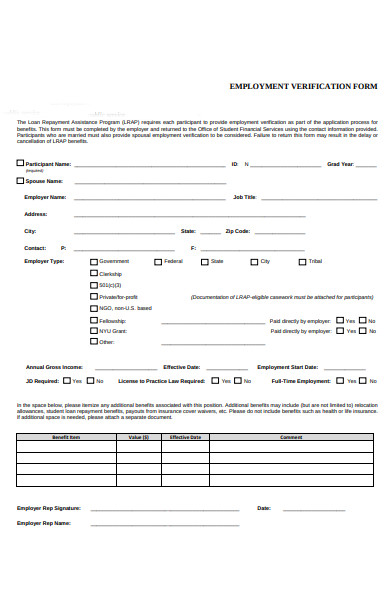
39. Service of Process Form
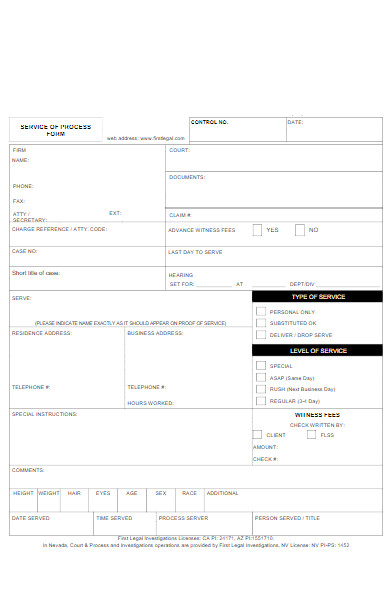
40. New Business Process Form
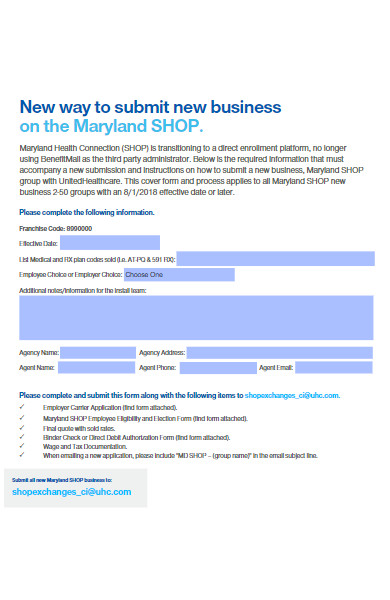
41. Modified Processing Application Form
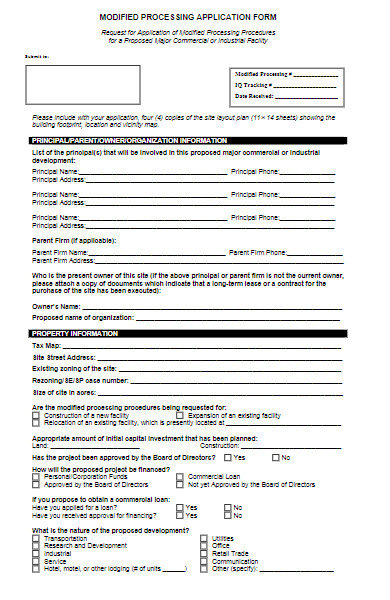
42. Post-Application Process Form
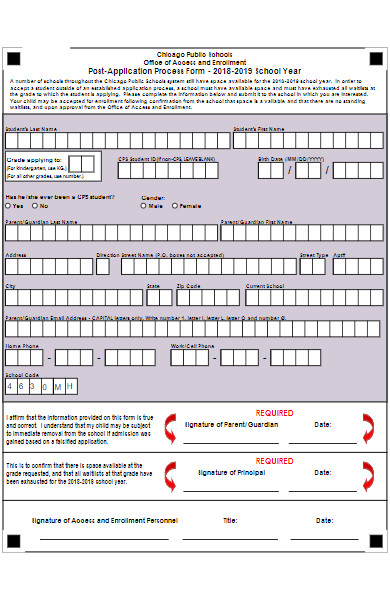
43. Decision Making Process Form
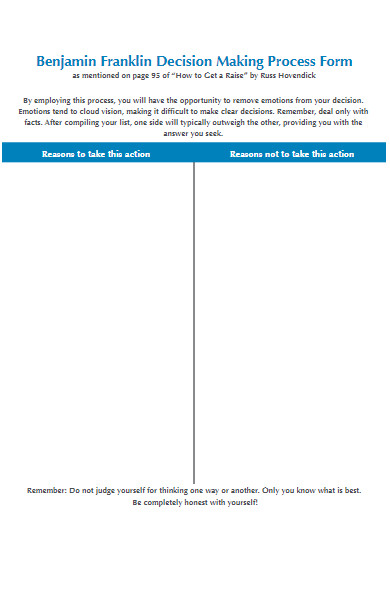
44. Hiring Process Employment Application Form
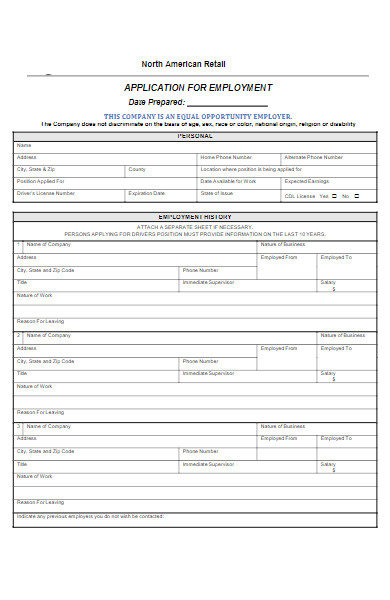
45. Document Process Change Request Form
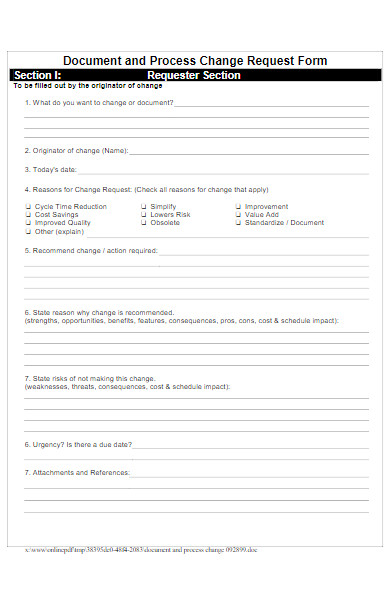
46. Process Request Form Example
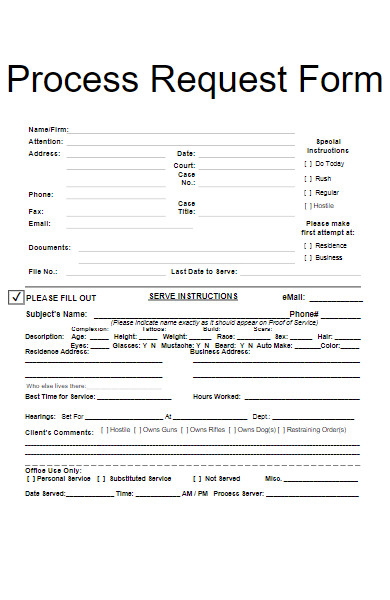
Why are Process Forms Important?
Process Forms are pivotal in the orchestration of systematic and efficient workflows within organizations, serving as a linchpin that ensures operational coherence, consistency, and compliance. Let’s delve into why Process Forms are deemed so indispensable:
1. Consistency and Standardization:
- Uniformity: Ensures every instance of a process is executed in a standardized manner.
- Replicability: Enables consistent replication of processes across various departments and teams.
2. Communication and Clarity:
- Transparency: Provides a clear, outlined pathway for processes, removing ambiguity.
- Interdepartmental Communication: Ensures that all involved parties have access to the same information, fostering aligned execution.
3. Compliance and Audit Trails:
- Regulatory Adherence: Ensures processes comply with relevant laws, policies, and regulations.
- Documentation: Offers a documented history of transactions, decisions, and actions taken, crucial for audits and reviews.
4. Efficiency and Productivity:
- Streamlined Workflows: Minimizes bottlenecks and ensures smooth transitions between process steps.
- Time Management: Reduces time spent on manual, repetitive tasks by providing a structured approach.
5. Error Mitigation:
- Accuracy: Helps in reducing errors by providing predefined fields and steps, guiding individuals through the process.
- Troubleshooting: A standardized form can quickly highlight where errors or discrepancies have occurred.
6. Data Management and Analysis:
- Data Uniformity: Ensures data collected is consistent, aiding in accurate analysis and reporting.
- Decision-Making: Data derived from process forms can inform strategic decision-making through insightful analytics.
7. Quality Control:
- Process Integrity: Ensures the quality of the process by stipulating specific steps and checks.
- Output Consistency: Maintains a steady quality of output by controlling process variables.
8. Scalability:
- Adaptability: Facilitates scaling of operations by providing a replicable model for process execution.
- Modification Ease: Can be adapted and modified as the organization grows and changes.
9. Employee Training and Onboarding:
- Training Material: Provides new employees with clear guidelines on how processes are conducted.
- Performance Evaluation: Serves as a baseline to evaluate adherence to process protocols.
10. Customer Satisfaction:
- Reliable Outputs: Ensures products or services are consistently delivered, bolstering customer trust.
- Timely Deliverables: Streamlined processes often lead to timely outcomes, enhancing customer satisfaction.
In essence, Process Forms intertwine various facets of business operations, weaving them into a coherent, systematic, and managed workflow that not only safeguards the quality and consistency of output but also serves as a valuable reservoir of data and insights, fostering organizational stability, growth, and continuous improvement.
Where are Process Forms Used?
Process Forms find their utility across a myriad of domains within an organization, serving as structured instruments that orchestrate, document, and streamline workflows. Here are various realms where Process Forms are commonly utilized:
1. Human Resources:
- Employee Onboarding: Guiding new hires through the initiation process, ensuring all steps are systematically followed.
- Leave Application: Standardizing the process for requesting, approving, and documenting employee leave.
- Performance Appraisal: Facilitating a structured approach to evaluating and documenting employee performance.
2. Procurement:
- Purchase Orders: Detailing vendor, item, pricing, and delivery information, ensuring accurate and authorized purchasing.
- Supplier Evaluation: Formally assessing and documenting supplier performance and compliance.
3. Finance and Accounting:
- Expense Reporting: Standardizing the submission, approval, and tracking of employee expenditures.
- Invoice Processing: Ensuring the accurate and timely processing of vendor invoices.
4. Sales and Marketing:
- Customer Onboarding: Outlining the steps to integrate a new customer effectively and consistently.
- Campaign Requests: Formalizing the submission and approval of marketing campaign proposals.
5. Information Technology:
- Service Requests: Streamlining the submission and fulfillment of IT-related requests or issues.
- Software Deployment: Detailing steps and checks to ensure successful software rollout.
6. Customer Service:
- Service Inquiry Handling: Structuring the process of handling and responding to customer inquiries or complaints.
- Feedback Collection: Standardizing the gathering of customer feedback post-service.
7. Production and Manufacturing:
- Quality Checks: Ensuring systematic execution of quality assurance tests and checks.
- Production Scheduling: Outlining the planning and execution of production runs.
8. Research and Development:
- Project Approval: Formalizing the submission, evaluation, and approval of R&D projects.
- Experiment Documentation: Structuring the documentation of experiments, findings, and outcomes.
9. Health and Safety:
- Incident Reporting: Standardizing the reporting and documentation of workplace incidents.
- Safety Audits: Outlining the execution and documentation of workplace safety audits.
10. Legal and Compliance:
- Contract Review: Ensuring systematic submission, review, and approval of legal contracts.
- Compliance Checks: Formalizing the process for conducting and documenting compliance audits.
11. Facilities Management:
- Maintenance Requests: Streamlining the submission, scheduling, and documentation of maintenance tasks.
- Asset Management: Structuring the allocation, utilization, and tracking of organizational assets.
Each of these areas necessitates a unique set of process forms, tailored to cater to the specific requisites and nuances of their operations. The forms serve as vital frameworks that facilitate smoother, error-free, and compliant process execution, fostering a harmonized operational landscape across the organizational spectrum. Our approval forms is also worth a look at
Which Software Tools are Best for Creating Process Forms?
Creating process forms necessitates software tools that offer versatility, ease of use, and capabilities to design forms that are aligned with various procedural requisites. Here are some widely recognized software tools that are utilized for creating process forms:
1. Microsoft Forms:
- Usage: General-purpose form creation and surveys.
- Key Features: Simple to use, integration with other Microsoft 365 apps, basic analytics.
2. Google Forms:
- Usage: Surveys, quizzes, and basic data collection forms.
- Key Features: User-friendly, integrates with Google Sheets, customizable themes.
3. JotForm:
- Usage: Dynamic forms for various purposes like registrations, surveys, and order forms.
- Key Features: Drag-and-drop builder, numerous templates, integrations with various platforms.
4. Typeform:
- Usage: Engaging forms, surveys, and quizzes.
- Key Features: Interactive and conversational forms, wide array of templates, useful analytics.
5. SurveyMonkey:
- Usage: Surveys, polls, and questionnaires.
- Key Features: Robust survey creation, analysis tools, various pre-built templates.
6. Formstack:
- Usage: Multi-purpose form creation with workflow automation.
- Key Features: Conditional logic, eSignature, data routing based on form responses.
7. Wufoo:
- Usage: Online forms for data collection and registrations.
- Key Features: Drag-and-drop form builder, payment integration, automated workflows.
8. Zoho Forms:
- Usage: Versatile online form creation and data collection.
- Key Features: Workflow automation, mobile forms, extensive customization.
9. Adobe FormsCentral:
- Usage: Advanced form creation, PDF generation.
- Key Features: High customization, PDF form creation, data analysis tools.
10. FormAssembly:
- Usage: Data collection forms with strong compliance.
- Key Features: Compliance-focused, integrations with CRM and other platforms, automation capabilities.
11. Gravity Forms (WordPress Plugin):
- Usage:WordPress-based form creation.
- Key Features:Powerful for WordPress users, extensive add-ons, conditional logic.
12. Tally:
- Usage:Free online form builder for basic needs.
- Key Features:No-code, simplistic UI, versatile form options.
Bonus Mention: Process Street:
- Usage: Structuring recurring checklists and procedures.
- Key Features:Procedure documentation, process management, integration capabilities.
Note on Selection:
Choosing the “best” tool often hinges on:
- Specific Needs: Particular requisites like data protection, compliance, or integrations.
- Budget: Available budget and scalability in terms of pricing.
- Ease of Use: How intuitive and user-friendly the platform is.
- Integration: Compatibility and integration with other utilized platforms and tools.
- Customization: Ability to modify forms as per unique organizational needs.
Deploying a balanced assessment of these factors ensures selection of a tool that dovetails seamlessly with the specificities and demands of your organizational processes and workflows.
Who Should Fill Out a Process Form?
The person or group tasked with filling out a process form can greatly depend on the context, the nature of the process, and the organizational structure. Here are several scenarios specifying who might be responsible for filling out a process form:
1. Employees:
- Scenario: Submitting leave requests, expense reports, or incident reports.
- Relevance: Employees are directly involved and possess the requisite information.
2. Managers:
- Scenario: Approving employee requests, initiating procurement processes, or evaluating team performance.
- Relevance: Managers often act as the decision-makers in various processes.
3. Human Resources:
- Scenario: Onboarding new employees, managing benefit enrollments, or handling grievance forms.
- Relevance: HR is usually the custodian of employee-related processes and data.
4. Finance Teams:
- Scenario: Filling out forms related to financial transactions, budget allocations, or financial reporting.
- Relevance: The finance team manages financial data and ensures fiscal compliance.
5. IT Personnel:
- Scenario: Managing IT service requests, software deployment, or cybersecurity incident reports.
- Relevance: IT professionals handle technical and digital aspects of operations.
6. Customer Service Representatives:
- Scenario: Documenting customer interactions, complaints, or feedback.
- Relevance: They directly interact with customers and manage related data.
7. Procurement Officers:
- Scenario: Initiating purchase requisitions or vendor evaluations.
- Relevance: Ensuring that procurement processes are compliant and documented.
8. Quality Assurance Teams:
- Scenario: Filling out forms related to quality checks, product testing, or quality audits.
- Relevance: They ensure products/services comply with quality standards.
9. Production Supervisors:
- Scenario: Documenting production schedules, machine maintenance, or safety checks.
- Relevance: Supervisors manage day-to-day operations on the production floor.
10. Sales Executives:
- Scenario: Filling out customer order forms, sales reports, or customer onboarding.
- Relevance: Sales teams manage customer acquisition and revenue-generation activities.
11. Legal Team:
- Scenario: Managing contract reviews, legal compliance checks, or incident reports.
- Relevance: Legal professionals ensure organizational adherence to laws and regulations.
12. External Stakeholders:
- Scenario: Customers filling out feedback forms or vendors completing registration forms.
- Relevance: Sometimes, input or validation from external parties is necessary.
General Principles:
- Process Ownership: Individuals or teams that own or manage a particular process.
- Direct Involvement: Those directly engaged in the process or incident.
- Decision-Making: Individuals or teams responsible for making decisions in a particular workflow.
- Data Custodianship: Those responsible for the data being processed or collected.
The specific individual or team required to fill out a process form ultimately hinges on the type of process, the information required, decision-making authority, and overall workflow design within the organization. Consequently, a meticulously crafted process should inherently guide the right individuals to the appropriate forms, ensuring accuracy and efficiency in organizational operations. In addition, you should review our Promotion Form.
How to Ensure Compliance in Filling Out Process Forms?
Ensuring compliance when filling out process forms is critical to maintaining the integrity, accuracy, and legality of organizational operations. Here’s a structured approach to enhance adherence and compliance in filling out process forms:
1. Clearly Define Guidelines:
- Specify Rules: Provide clear instructions on how to complete the form, what information is needed, and the implications of incorrect or incomplete submissions.
- Documentation: Maintain a comprehensive guide or handbook that details the procedural and compliance aspects of each form.
2. Design User-Friendly Forms:
- Logical Flow: Ensure that the form has a coherent and intuitive structure to facilitate ease of completion.
- Mandatory Fields: Clearly mark and enforce the completion of essential sections or fields.
- Help Text: Include tooltips or help text to guide users on how to accurately complete each field.
3. Implement Technological Aids:
- Data Validation: Utilize data validation techniques to ensure that the entered data adheres to specified formats or criteria.
- Automations: Use automation to populate repetitive or common data fields, reducing manual input and minimizing errors.
- Integration: Enable system integrations to fetch or verify data from other platforms, ensuring consistency and accuracy.
4. Conduct Training and Awareness Programs:
- Training Sessions: Offer training to ensure users understand the importance and correct procedure to fill out forms.
- Awareness: Raise awareness regarding the legal and operational importance of accurate form completion.
5. Establish a Review and Approval Mechanism:
- Review Team: Constitute a team or individual responsible for reviewing submitted forms for accuracy and completeness.
- Multi-level Approval: Implement a multi-tier approval process to validate the submitted information through various hierarchical levels.
6. Ensure Accessibility and Security:
- Accessible Platforms: Ensure that the platform hosting the process forms is accessible to all relevant stakeholders.
- Data Security: Ensure that the forms and the data therein are securely stored and transmitted, adhering to data protection regulations.
7. Audit and Feedback:
- Regular Audits: Conduct audits to ensure that forms are being filled out in accordance with regulatory and organizational standards.
- Feedback Mechanism: Establish channels through which feedback regarding the form-filling process can be gathered and analyzed.
8. Leverage Analytics:
- Data Analytics: Utilize data analytics to identify patterns, discrepancies, or common errors in form submissions.
- Reporting: Develop reports to monitor compliance rates and identify areas needing attention or revaluation.
9. Legal and Regulatory Alignment:
- Regulatory Compliance: Ensure that forms and their processing mechanisms comply with relevant legal and industry-specific regulations.
- Legal Review: Engage legal professionals to validate the form and its guidelines for legal accuracy and completeness.
10. Continuous Improvement:
- Process Review: Periodically review the process of form completion and submission for potential improvements or updates.
- Adaptation: Be agile in adapting forms and processes in line with changing regulatory, organizational, or operational needs.
Embedding these strategies into the process form creation, distribution, and management cycles will not only fortify compliance but also elevate the accuracy, reliability, and effectiveness of the data captured, thereby augmenting the overall efficiency and compliance of organizational workflows and processes. You may also be interested in our student form.
How to Manage and Store Completed Process Forms?
Managing and storing completed process forms efficiently is crucial to ensure data integrity, accessibility, and compliance with various legal and organizational policies. Here’s a comprehensive guide to effective management and storage of these forms:
1. Digital Storage:
- Implement a Document Management System (DMS): Utilize a DMS to store, manage, and retrieve digital forms with features like search, categorization, and version control.
- Cloud Storage: Leverage cloud storage solutions for enhanced accessibility and to facilitate remote working environments.
2. Data Security:
- Encryption: Ensure that data is encrypted during transmission and when stored to safeguard against unauthorized access.
- Access Control: Implement robust access control mechanisms, ensuring only authorized personnel can access specific forms or data.
- Regular Backups: Conduct periodic backups of stored forms to prevent data loss and facilitate recovery in case of an incident.
3. Compliance Management:
- Retention Policies: Define and adhere to data retention policies, keeping forms for legally mandated periods.
- Audit Trails: Maintain a log of who accessed or modified the forms to ensure traceability and accountability.
4. Organizational Workflow:
- Categorization: Implement a systematic categorization and filing system, making it simpler to locate specific forms.
- Metadata Management: Employ metadata tagging to enhance the searchability and management of stored forms.
- Automated Workflow: Automate workflows where possible to move forms through predetermined pathways based on specific triggers or criteria.
5. Collaboration and Sharing:
- Secure Sharing: Establish secure channels and protocols for sharing forms within and outside the organization.
- Collaborative Platforms: Use platforms that enable collaborative work on forms while maintaining version control.
6. Archiving and Purging:
- Archival System: Set up a system for archiving outdated or infrequently accessed forms.
- Scheduled Purging: Define and implement a schedule for safely disposing of forms that are no longer needed, ensuring compliance with data protection laws.
7. Review and Update:
- Periodic Review: Regularly review stored forms to ensure they remain relevant and in compliance with current regulations.
- Updates: Ensure that any changes in forms are updated in the storage system and communicated to relevant stakeholders.
8. Physical Storage (if applicable):
- Physical Security: Secure physical storage areas to protect against unauthorized access, damage, or loss.
- Organization: Utilize filing systems, cabinets, and labeling to ensure easy retrieval and management of physical forms.
9. Analytics and Reporting:
- Data Analysis: Leverage stored data for analytics, deriving insights to improve processes and decision-making.
- Reporting: Generate reports based on stored forms to assist in operational, compliance, and strategic activities.
10. User Training:
- Training Programs: Conduct training for staff on how to use, manage, and store forms effectively and securely.
- Resource Availability: Provide resources and support to assist users in managing forms, answering queries, and resolving issues.
11. Feedback and Improvement:
- Feedback Mechanism: Implement a system for collecting feedback on form management and storage practices.
- Continuous Improvement: Regularly analyze processes and implement improvements based on feedback and technological advancements.
Incorporating these strategies will facilitate meticulous management and storage of completed process forms, ensuring they are easily retrievable, secure, and managed in compliance with regulatory and organizational directives. This approach not only safeguards critical data but also optimizes operational efficiency and supports informed decision-making within the organization. You may also be interested to browse through our other enrollment forms.
How Do You Update and Optimize Process Forms?
Updating and optimizing process forms is pivotal for maintaining their relevance, ensuring compliance, and enhancing operational efficacy. Here’s a structured approach towards the continuous improvement of process forms:
1. Collect and Analyze Feedback:
- User Feedback: Gather insights from users who frequently interact with the forms about usability, clarity, and any difficulties they encounter.
- Stakeholder Feedback: Seek input from various stakeholders, like departments that utilize the form data.
2. Data Analysis:
- Metrics Evaluation: Monitor and evaluate metrics related to form usage, like completion time, error rates, and abandonment rates.
- Data Relevance: Assess whether the data collected is pertinent and adequately serves its intended purpose.
3. Regulatory and Compliance Check:
- Legal Review: Ensure that the form adheres to current legal and regulatory standards.
- Policy Alignment: Ensure all questions and data points align with organizational policies and objectives.
4. User Experience (UX) Optimization:
- User-Friendly Design: Make sure the form layout is intuitive, with a logical flow from one section to the next.
- Mobile Responsiveness: Ensure that the form is easily navigable and functional on mobile devices.
5. Automation Integration:
- Data Pre-population: Implement auto-fill features where possible to streamline form completion.
- Automated Workflows: Integrate the form with automated workflows to minimize manual data transfer and processing.
6. Form Simplification:
- Minimize Fields: Eliminate unnecessary fields and ensure every question adds value to the process.
- Clarity: Ensure all instructions, questions, and options are clear and concise to prevent misunderstandings.
7. Technological Upgrades:
- Platform Upgradation: Ensure the platform hosting the form supports the latest technological advancements and user expectations.
- Security Enhancements: Regularly update security features to protect data integrity and privacy.
8. Accessibility Improvement:
- Inclusive Design: Ensure forms are accessible to individuals with disabilities by adhering to accessibility standards.
- Multilingual Support: Consider providing multilingual support, especially in diverse and global contexts.
9. Testing and Validation:
- A/B Testing: Employ A/B testing to compare different form versions and ascertain which performs better in terms of user engagement and data quality.
- Validation Checks: Ensure that all validation rules are up-to-date and accurately flag data entry issues.
10. Communication and Training:
- Change Communication: Inform relevant stakeholders about changes to the form and the rationale behind them.
- User Training: Offer training sessions to familiarize users with new features or changes.
11. Documentation Update:
- Update Guides: Ensure that any documentation, guides, or tutorials related to the form are updated to reflect changes.
- Knowledge Base: Update any knowledge base or FAQ sections related to the form.
12. Periodic Review:
- Scheduled Reviews: Establish a schedule for regular reviews of the form to ensure its continued relevance and effectiveness.
- Continuous Improvement: Adopt a mindset of continuous improvement, always seeking ways to further optimize forms.
Implementing these strategies for updating and optimizing process forms ensures they remain efficient, user-friendly, and aligned with organizational and regulatory requirements. This continual evolution supports streamlined operations, enhances data quality, and ensures that forms effectively serve their intended purpose within organizational workflows. You can refer to our Vendors Registration Form.
What Key Information Should be Included in a Process Form?
A process form, designed to gather relevant data and streamline operational workflows, should be meticulously crafted to ensure it captures all pertinent information without being overly complex or burdensome to complete. Here’s a comprehensive guide regarding the key information that should typically be included in a process form:
1. Header Information:
- Title: Clearly indicate the purpose of the form.
- Logo/Branding: Incorporate company logo or branding elements.
- Date: Include a field to capture the date of form submission.
- Form Reference Number: A unique identifier or reference number for tracking purposes.
2. Personal Information:
- Full Name: The individual’s or entity’s complete name.
- Contact Details: Phone number, email address, and physical address.
- Affiliation/Department: If applicable, the department or team the individual belongs to.
3. Purpose of the Form:
- Objective: A brief overview or instructions regarding the form’s intent and how to fill it out.
- Guidelines: Clearly defined guidelines to assist in correctly completing the form.
4. Detailed Information:
- Specific Data Points: Various fields to collect specific information related to the process, such as quantities, descriptions, etc.
- Timeframes: Relevant dates, like when an event occurred or a deadline.
5. Validation and Verification:
- Signature: A field for digital or physical signatures to validate information.
- Verification: Sections where data can be verified by another party, if necessary.
6. Contextual Information:
- Comments/Notes: Space for users to add additional notes or comments.
- Attachments: Option to add relevant attachments, documents, images, or files.
7. Process Specific Information:
- Status: Indicate the current status or phase of the process.
- Responsible Parties: Mention individuals or departments responsible for subsequent steps.
8. Feedback and Evaluation:
- Rating: An option for users to rate their experience with the process.
- Feedback: Space to provide qualitative feedback or suggestions.
9. Legal and Compliance:
- Compliance Check: Fields that ensure adherence to compliance standards.
- Privacy Statement: A brief note about how the information will be used and safeguarded.
10. Navigation and User Assistance:
- Help Text: Inline help text or tooltips for complex sections or questions.
- Progress Indicators: (For digital forms) Indicators that show how much of the form is complete.
11. Accessibility and Inclusivity:
- Language Options: If possible, include options for multiple languages.
- Accessible Design: Ensure that the form is accessible to individuals with disabilities.
12. Submission and Next Steps:
- Submission Instructions: Clear guidelines on how and where to submit the form.
- Next Steps: Information about what to expect after form submission.
Additional Tips:
- Brevity is Key: Ensure all questions are concise and to the point.
- Logical Flow: Organize the information logically, moving from general to specific.
- Privacy Consideration: Only ask for information that is absolutely necessary to respect privacy and adhere to data protection laws.
Ensuring that a process form encompasses these key data points and considerations will augment its efficacy, user-friendliness, and compliance, thereby enhancing the overall efficiency and data accuracy of the workflow or process it supports.
How to Create a Process Form?
Creating a process form involves an amalgamation of strategic planning, designing, testing, and implementation. This step-by-step guide will walk you through the essentials of crafting an effective process form:
Step 1: Define the Purpose
- Objective Identification: Understand and articulate the primary goal of the form.
- Information Gathering: Identify the key pieces of information that need to be collected.
Step 2: Identify Stakeholders
- User Identification: Determine who will be filling out the form.
- Data Handlers: Identify who will be using the data and for what purpose.
Step 3: Design the Form
- Drafting: Create an initial draft that includes all necessary fields.
- Layout Design: Ensure the form has a logical flow, moving from general to specific information, with an intuitive and user-friendly layout.
- Accessibility: Make sure the form is accessible and inclusive, considering different users’ needs.
Step 4: Ensure Legal and Ethical Compliance
- Data Protection: Ensure the form adheres to data protection laws.
- Consent and Transparency: Include clear explanations about how the data will be used and stored.
Step 5: Implement Technological Solutions
- Form Building Tool: Choose a form-building tool or software that suits your needs (e.g., Google Forms, Microsoft Forms, Typeform).
- Automation: Implement automation for data collection, storage, and transmission where possible.
Step 6: Include Validation and Verification
- Accuracy Checks: Implement field validations to ensure data accuracy and completeness.
- Verification Mechanisms: Include steps for verifying and validating the information provided, if necessary.
Step 7: Test the Form
- Pilot Testing: Run a test phase with a small group of users to gather feedback and identify potential issues.
- Adjustments: Make necessary adjustments based on the feedback and findings from the test phase.
Step 8: Implement Feedback Mechanisms
- Feedback Fields: Include sections where users can provide feedback about the form and process.
- Continuous Improvement: Establish a mechanism for regularly reviewing and acting upon the feedback received.
Step 9: Roll Out the Form
- Launch: Deploy the form to the intended audience.
- Communication: Inform stakeholders about the new form, providing instructions and resources to assist them in completing it.
Step 10: Data Management and Storage
- Storage Solutions: Ensure secure and compliant data storage solutions.
- Data Retrieval: Implement mechanisms for easy data retrieval and utilization.
Step 11: Monitor and Review
- Performance Metrics: Monitor key performance indicators related to form usage and data quality.
- Periodic Reviews: Conduct regular reviews to ensure the form continues to meet its objectives and compliance standards.
Step 12: Update and Optimize
- Iterative Improvements: Make ongoing improvements based on user feedback, data needs, and technological advancements.
- Change Management: Ensure updates are communicated and rolled out in a way that minimizes disruption and ensures continuity.
Incorporating these steps in creating a process form will ensure it is not only effectively gathering the necessary data but is also user-friendly, compliant, and adaptable to evolving organizational needs and technologies. It’s essential to approach option form creation with a user-centric and data-driven mindset, ensuring that it serves its intended purpose while providing a seamless experience for both the end-user and data handlers.
Tips for creating an Effective Process Form
Creating an effective process form requires a thoughtful approach that balances user experience, data accuracy, and efficiency. Here are some actionable tips for designing a process form that’s both effective and user-friendly:
1. Clear Objectives:
- Define the primary purpose and desired outcomes from the form.
- Ensure every question aligns with the objective and isn’t superfluous.
2. User-Centric Design:
- Ensure the form layout is intuitive and the flow of questions is logical.
- Limit the number of fields to keep it concise and avoid user fatigue.
3. Accessibility:
- Ensure your form is accessible to people with disabilities by adhering to web accessibility standards (e.g., WCAG).
- Offer multiple language options if catering to a diverse user base.
4. Data Validation:
- Implement data validation to ensure accuracy and completeness of information.
- Use appropriate field types (text, number, date, etc.) to guide correct input.
5. Mobile Responsiveness:
- Make sure your form is easily navigable and functional on mobile devices.
- Check all elements like buttons and dropdowns are touch-friendly.
6. Progress Save and Resume:
- Allow users to save their progress and resume later, especially for longer forms.
7. Privacy and Security:
- Clearly communicate how the data will be used and stored.
- Ensure all data transmitted and stored adheres to data protection regulations.
8. Provide Help and Guidance:
- Use tool-tips or help icons to provide additional information for complex questions.
- Clearly mark optional fields and ensure mandatory fields are indicated.
9. Visual Appeal:
- Use a clean and minimalist design to enhance readability.
- Ensure consistent use of fonts, colors, and styles throughout.
10. Smooth Transitions:
- For multi-page forms, use smooth transitions and provide a progress indicator.
11. Auto-Fill Capabilities:
- Implement auto-fill options for relevant fields to enhance user convenience.
12. Feedback Loop:
- Implement a confirmation message upon successful submission.
- Provide options for users to submit feedback about their experience with the form.
13. Testing:
- Test the form thoroughly with various user groups to gather insights and improve.
- Ensure all functionalities like validation, submission, and auto-fill work as intended.
14. Data Management:
- Make sure the backend data management is organized and data is easily retrievable.
- Implement automation to reduce manual data handling and enhance efficiency.
15. Continuous Improvement:
- Regularly review form performance and make necessary adjustments.
- Stay attuned to user feedback and technological advancements for ongoing optimization.
16. Legal and Ethical Compliance:
- Ensure all aspects of the form, including data handling and storage, comply with relevant legal standards.
- Regularly update the form to ensure alignment with any regulatory changes.
Balancing usability with data collection effectiveness is key in form design. By adhering to these tips, you ensure that your facility form is not only providing value in terms of data collection but is also respecting users’ time and effort, thereby enhancing overall engagement and submission rates.
Related Posts
-
FREE 32+ Holiday Forms in PDF | MS Word
-
FREE 30+ Nonprofit Forms in PDF | MS Word
-
FREE 31+ Therapy Forms in PDF | MS Word | XLS
-
FREE 52+ Bid Forms in PDF | MS Word | XLS
-
FREE 32+ Communication Forms in PDF | MS Word | XLS
-
FREE 44+ E Commerce Forms in PDF | MS Word
-
FREE 30+ Animal Shelter Forms in PDF | MS Word
-
FREE 34+ Charity Forms in PDF | MS Word | Excel
-
FREE 35+ Advertising Forms in PDF | MS Word | XLS
-
FREE 53+ Sports Forms in PDF | MS Word | Excel
-
FREE 51+ Payment Forms in PDF | MS Word | Excel
-
FREE 52+ Subscription Forms in PDF | MS Word | Excel
-
Arrival Form
-
Migration Form
-
Withdrawal Form
